The rule of odds interior design principle is my go-to styling secret. Learn why odd-numbered groupings—like three, five, or seven—make arrangements in your home feel more balanced, interesting, and beautiful.
Have you ever styled a space and thought, Something’s off, but I can’t quite put my finger on it? You know those arrangements that just feel right, even if you can’t explain why? Chances are, the Rule of Odds is quietly at work. Often, the fix is simpler than you think: swap that even-number grouping for an odd one.
The rule of odds interior design is one of my favorite tricks—and as you’ll see in the photos below, I use it constantly in my own home. Whether it’s pillows on the sofa, pumpkins on the counter, or accessories on a shelf, odd numbers just feel right. They create instant balance without being stiff, give your eyes a natural focal point, and make the whole arrangement look like it came together effortlessly.
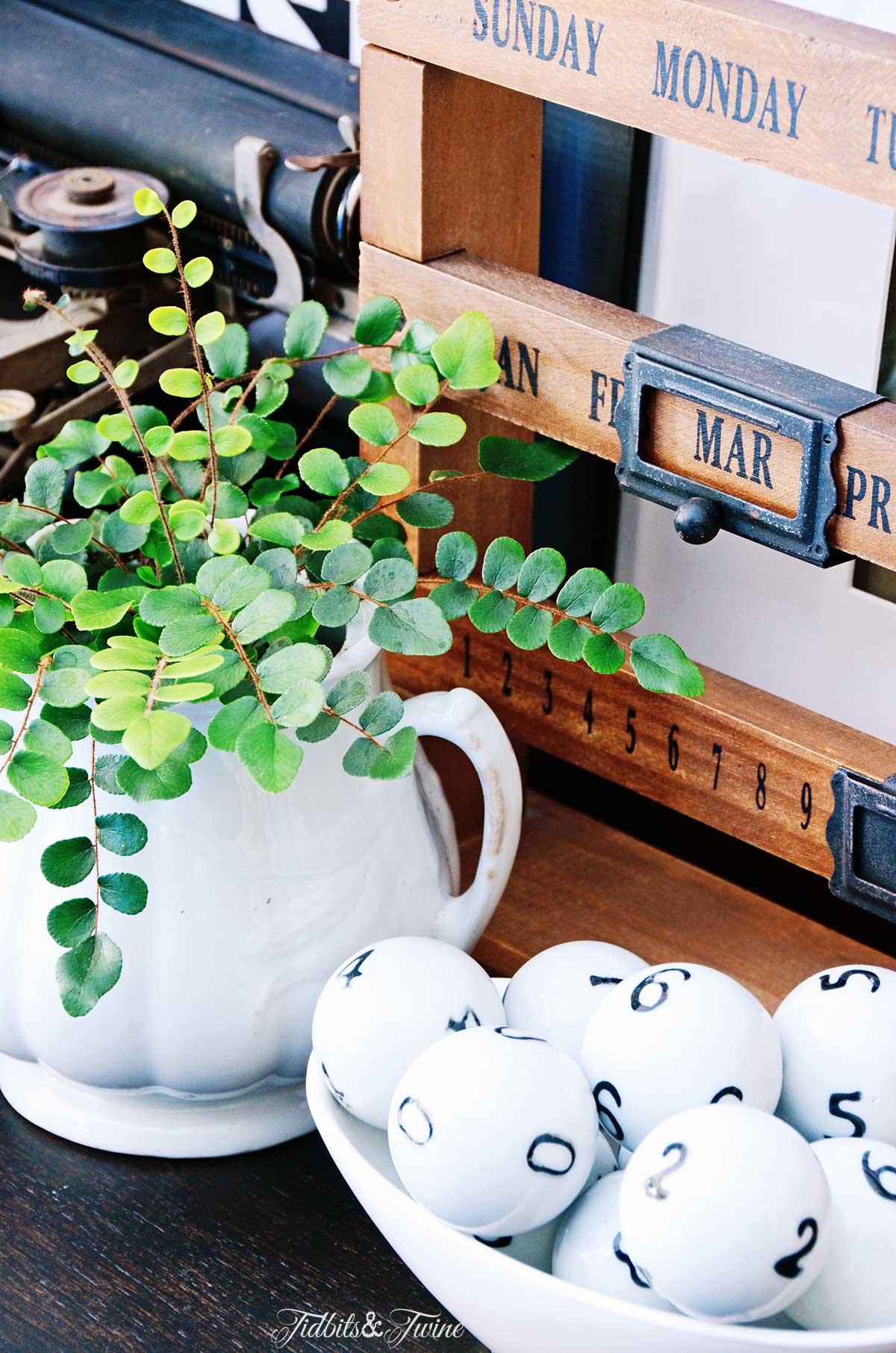
And here’s the thing: like all decorating “rules,” this is really just a guideline. I break it from time to time, and you can too. But learning why the rule of three decorating (and its bigger siblings, five and seven) works will give you a reliable tool in your styling toolkit.
What Is the Rule of Odds?
The rule of odds is a simple design principle that says items look better when grouped in odd numbers—most often three, five, or seven. Why? Because odd numbers naturally create a centerpiece. There’s always a middle item for your eye to land on, with the others playing supporting roles, and that makes the arrangement feel complete without being too perfect. Just like in photography or floral design, odd numbers feel more dynamic and organic.
If you’ve ever looked at two candlesticks on a table and thought something felt a little… flat, adding a third instantly changes the whole mood. It feels more dynamic, more balanced, and somehow more finished. You’ve probably noticed this in nature too—flowers in a vase, stones on a beach, even leaves on a stem often occur in uneven numbers. When you bring that same rhythm into your home, your decor looks more natural and inviting, as if it “just happened” (even when you planned it down to the last detail).
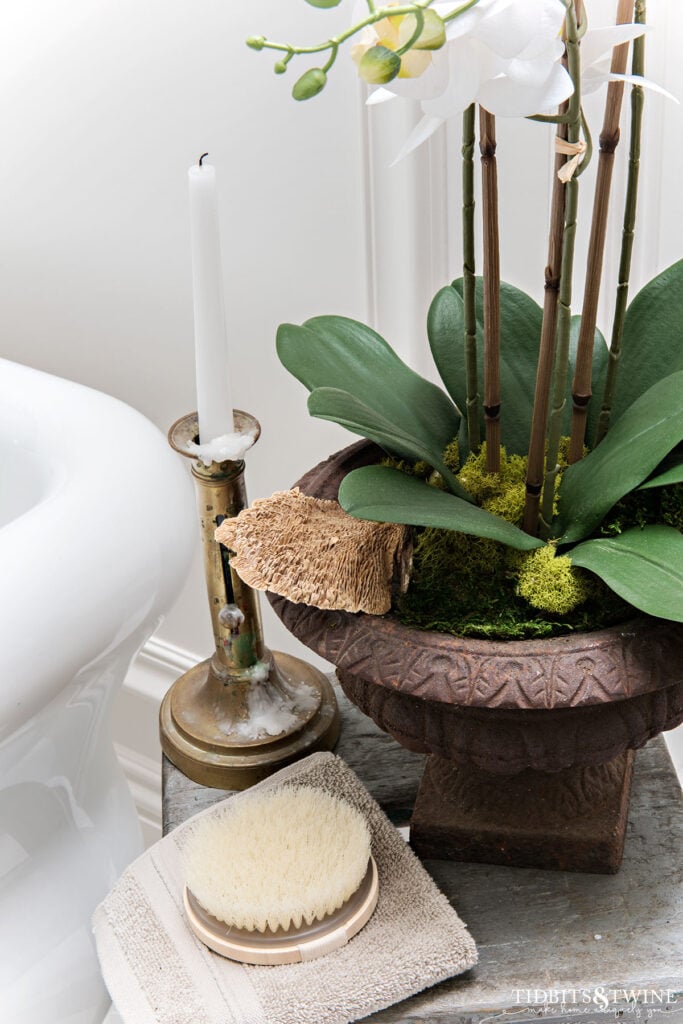
Why It Works
The rule of odds works because our eyes are naturally drawn to a central focal point, and odd-numbered groupings create that point while keeping the arrangement visually interesting. While we often think only about the “star” of the scene, the Rule of Odds makes the whole composition feel harmonious.
- Creates a Focal Point: Odd-number groupings have a natural center, making it easy for the eye to find a “main character” in your arrangement.
- Keeps the Eye Moving: The uneven layout encourages you to visually explore rather than stop abruptly.
- Adds Depth & Interest: Varying height, texture, and shape within the group creates dimension and prevents flatness.

How to Apply the Rule of Odds
It’s About Visual Balance, Not Just Numbers
When I say “three” or “five,” I’m talking about visual groupings, not necessarily individual items. For example, you might style two single objects plus a third “group” of smaller items, and together they read as three. A small stack of books might read as one object in a grouping. Or maybe you have four standalone pieces and one small cluster—that still makes five groupings in the overall arrangement. The goal is to count what your eye sees as a unit, not every single object.
1. Vignettes
From kitchen counters to coffee tables, odd-number vignettes just feel more intentional. Start with a central anchor piece, then add supporting items of different heights and shapes.

2. Pillows
This is where the rule of odds interior design really shines for me.
On my everyday sofa, I arrange 2 pillows on one side, 1 in the center, and 2 on the other — a total of 5 pillows. This odd-number setup instantly feels balanced yet relaxed, with enough variety to keep it interesting.
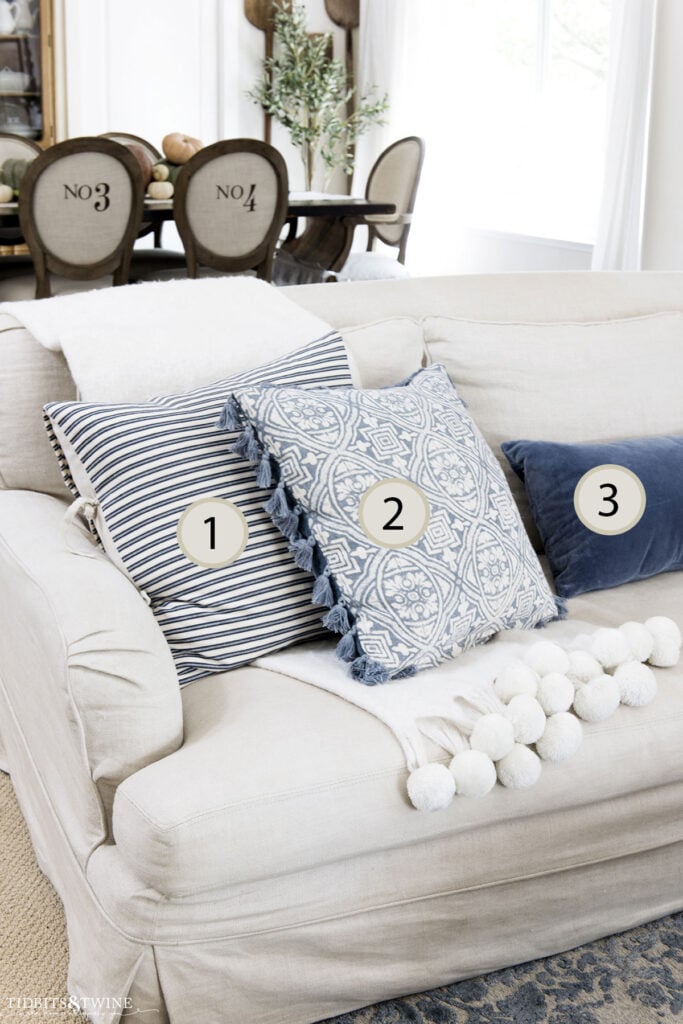
The same idea works no matter your sofa size. On a sectional, I might go up to 7 or even 9 pillows for a cozy, layered look — always keeping the total number odd so the arrangement feels inviting instead of overly staged. For sizing help, see my guide: How to Choose the Perfect Throw Pillow Sizes.
3. Furniture Groupings
The rule of odds interior design isn’t just for accessories — it works beautifully with furniture, too. Grouping pieces in odd numbers creates balance while keeping things relaxed and approachable.
Think about:
- Two armchairs with a small side table in between — the table becomes the central anchor, with the chairs framing it.
- A sofa flanked by two matching chairs — three main pieces that create a natural conversation area.
- Two sofas facing each other with a coffee table in between — the table serves as the centerpiece, giving the setup symmetry within an odd-number arrangement.
These furniture “clusters” keep the arrangement dynamic, give the eye a focal point, and make the space feel thoughtfully pulled together.
4. Shelves
On shelves, you can use the Rule of Odds in micro-groupings within each shelf, or in the overall number of styled groupings across the whole unit.
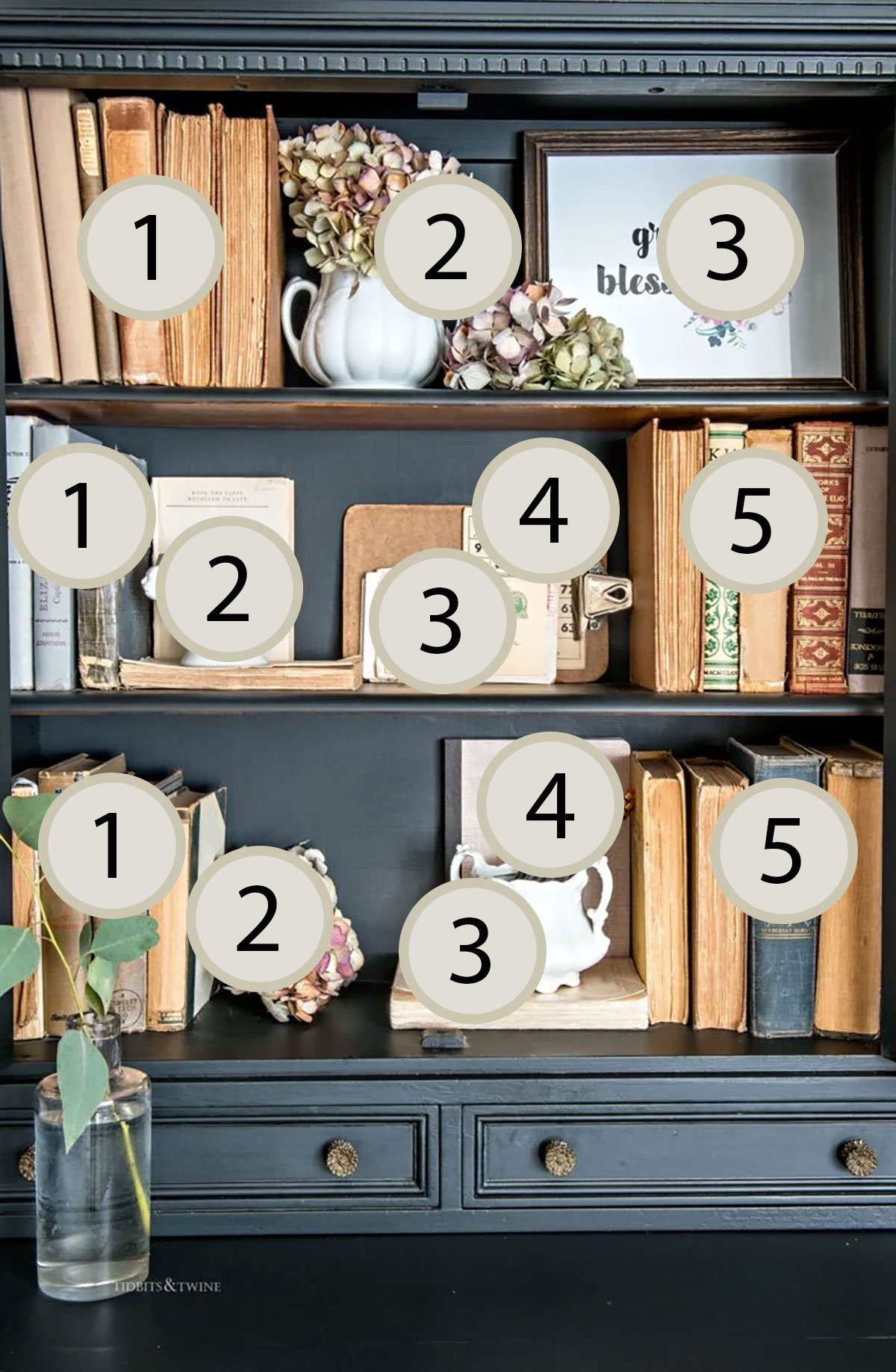
5. Color Palette (60-30-10 Teaser)
Odd groupings pair beautifully with the 60-30-10 color rule (more on that coming soon!). You can style three dominant colors in this ratio while arranging the elements themselves in odd-number groups.
6. Mantels
Mantels can easily become stiff if they’re styled too symmetrically. Odd groupings instantly loosen the look while still feeling finished.
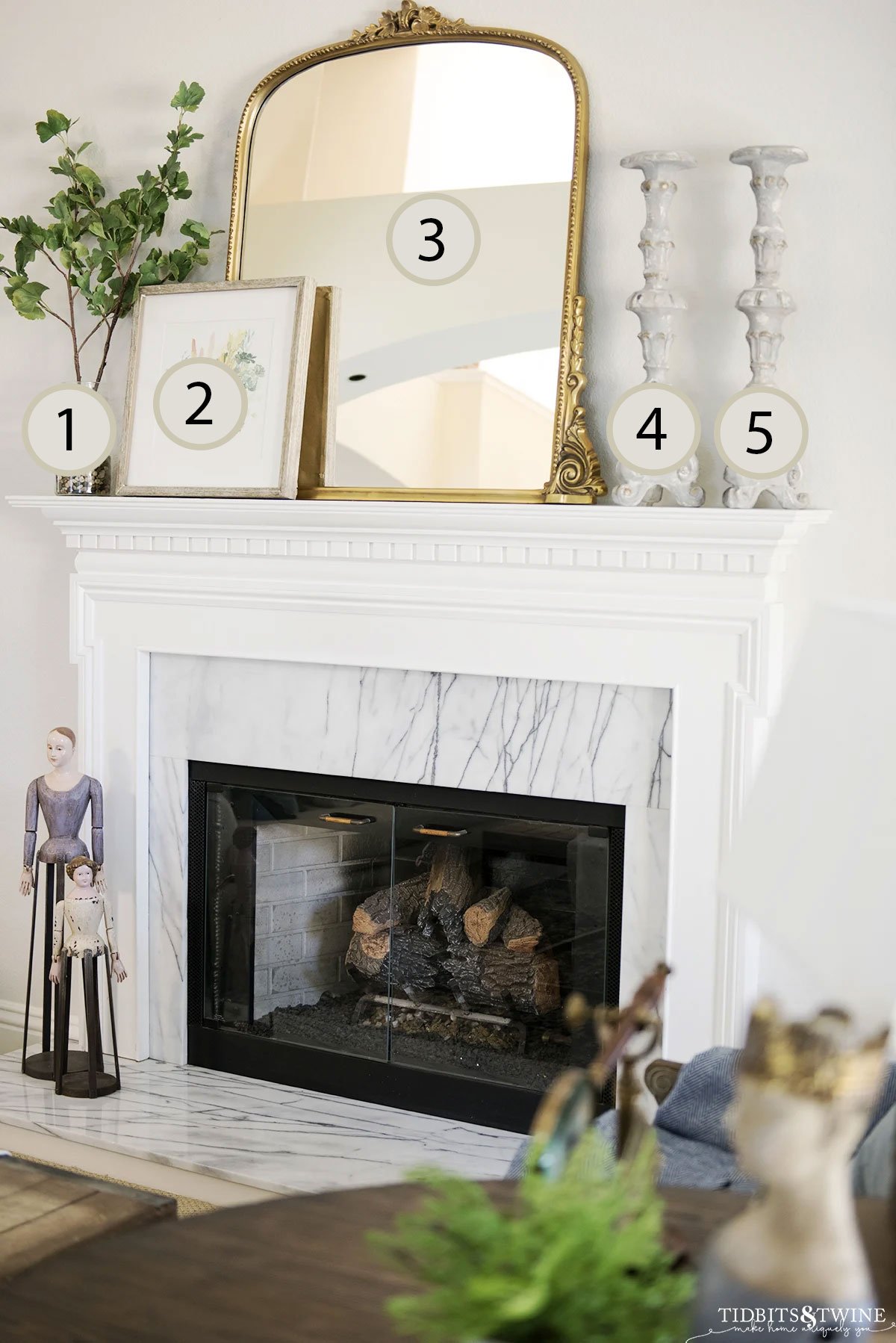
7. Seasonal Decor
Seasonal arrangements—like my white pumpkin display—look more curated when you keep them to odd numbers.
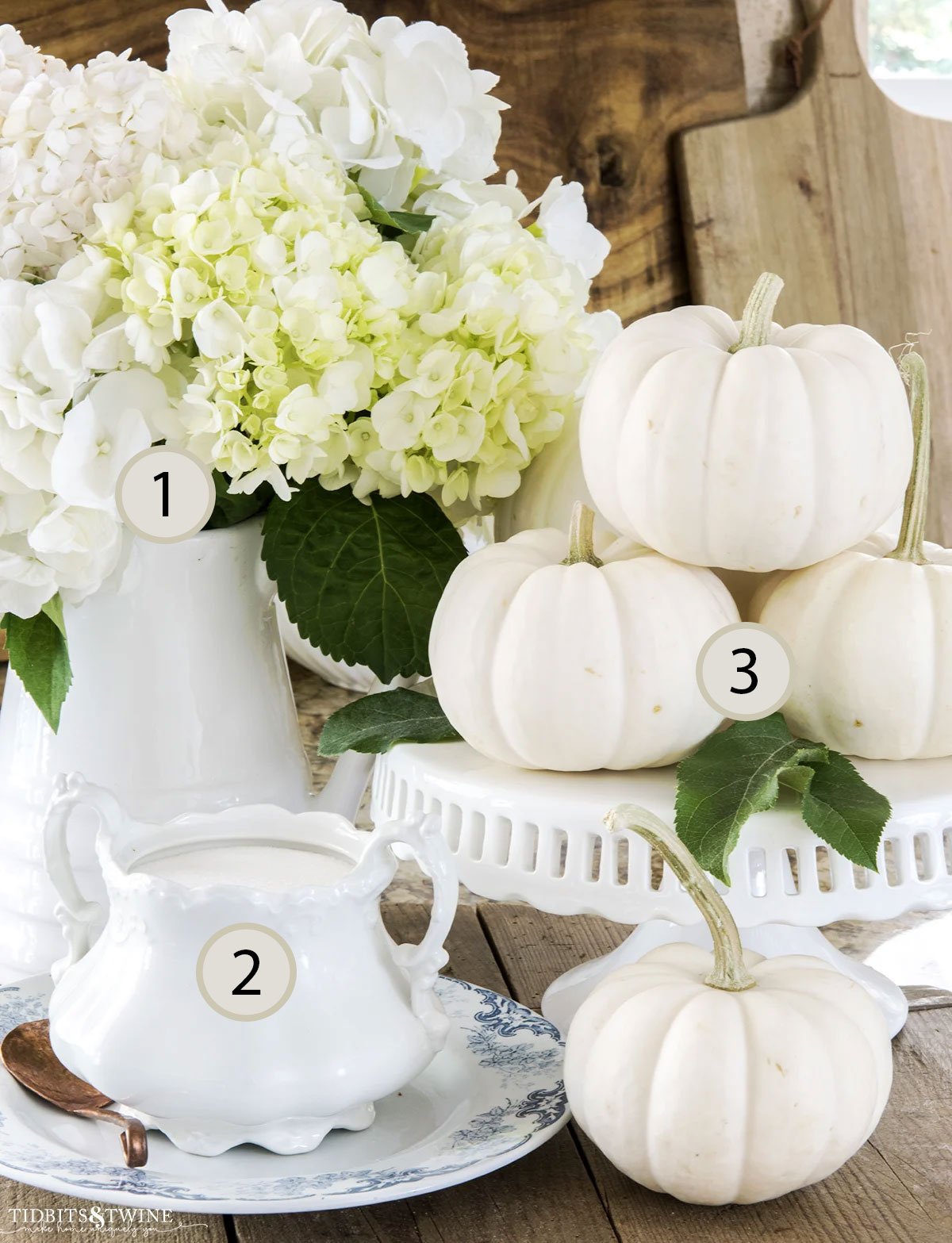
Exceptions to the Rule
While the Rule of Odds works beautifully in many situations, there are times when it simply doesn’t apply:
- Symmetry for Formality: In formal spaces, matching pairs can be more impactful.
- One Statement Piece: Sometimes one oversized item is the most powerful choice.
- Functional Needs: Bedside tables, place settings, and certain layouts may require even numbers.
Outside of these moments, treat the Rule of Odds as a guideline, not gospel. Some of my favorite rooms bend (or even break) it—and still look amazing.
Pro Styling Tips
Start with your focal point, then build around it.
Every great vignette begins with a star of the show—whether that’s a statement pumpkin, a favorite vase, or a tall candlestick. Place this piece first so your eye has a natural landing spot, then layer in supporting elements that complement (but don’t compete with) it.
Mix heights, shapes, and textures for dimension.
Flat, uniform arrangements can feel lifeless. Play with varying heights—tall stems, medium bowls, and low decorative objects—and combine smooth with rough, shiny with matte, round with angular. This variety keeps the eye moving.
Repeat colors or finishes for unity.
A touch of repetition helps pull everything together. You might echo the brass finish of a candlestick in a picture frame nearby, or repeat a pumpkin’s soft sage tone in a throw pillow across the room.
Give items breathing room.
Crowding every inch of your surface can feel overwhelming. Let some negative space remain so each piece has room to shine. This makes the grouping look intentional instead of cluttered.
Use trays, boards, or books to group smaller pieces.
If your vignette includes little treasures—like votives, coasters, or ornaments—corralling them on a tray, wood board, or stacked books turns them into a single visual “unit.” This trick helps maintain the odd-number balance without creating visual chaos.
FAQ
A: Yes! Many designers use three main colors—often in a 60-30-10 ratio—for a balanced, layered look.
A: Absolutely. Use symmetry when you want a formal, traditional feel, and the Rule of Odds when you want a relaxed, organic look.
A: Keep the count odd but scale down the size of the items to keep proportions right.
A: Yes. Try grouping 3, 5, or 7 frames in a gallery wall for a collected, organic feel.
Final Thoughts
The rule of odds interior design is an easy, go-to way to make arrangements feel polished and welcoming. Whether you’re styling a mantel, setting out seasonal decor, or arranging pillows, odd numbers keep the eye engaged—and once you try it, you’ll start seeing the difference everywhere.

Join the Community
Let’s keep in touch! Get exclusive artwork plus the latest news delivered directly to your Inbox!

